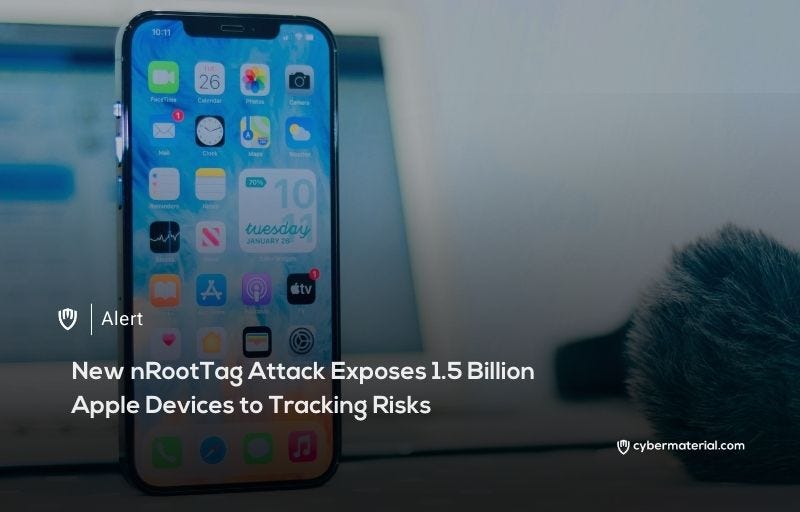
The newly discovered nRootTag attack has exposed over 1.5 billion Apple devices, including iPhones, iPads, Apple Watches, and Macs, to covert tracking risks. The attack takes advantage of Apple’s Find My network, which relies on Bluetooth Low Energy (BLE) protocols to track lost devices. Researchers have revealed that nRootTag can turn non-Apple devices, like Windows PCs, Android phones, and even Linux-based IoT devices, into stealthy tracking beacons without needing root access. This unprecedented exploit allows attackers to track devices in real-time by hijacking Apple’s ecosystem and bypassing its security mechanisms.
nRootTag works by exploiting the Find My network’s process of broadcasting encrypted “lost messages” from AirTags, which are relayed by nearby Apple devices to the Apple Cloud.
The attackers use trojanized code installed on target devices to collect their BLE advertising addresses, requesting cryptographic keys from a server under the attacker’s control. Once the keys are retrieved, these devices begin to broadcast forged lost messages, mimicking the signals of AirTags, and effectively turning them into tracking beacons. Apple devices in the vicinity unknowingly relay these signals to Apple servers, allowing attackers to track the targeted device.
The researchers demonstrated that the nRootTag attack could be executed with minimal cost and in a very short amount of time.
Using advanced techniques like rainbow table precomputation and GPU-assisted brute-forcing of keys, the attackers can retrieve cryptographic keys at a rate of over 2.1 million keys per second, reducing the attack cost to less than $5 per target. The attack’s cross-platform compatibility increases its potential scope, affecting not just smartphones, but also smartwatches, laptops, and medical IoT devices. With such a low cost and high scalability, the researchers believe the attack is likely to be adopted by cybercriminals, making it a significant global threat.
Although Apple has responded with patches in iOS 18.2, macOS Sequoia 15.2, and other updates, the fix only prevents patched devices from relaying malicious signals. The risk remains due to the vast number of unpatched devices still in use, allowing the attack to persist as long as unpatched iPhones or other Apple devices are nearby. To mitigate the risks, the researchers recommend enterprises segment Bluetooth traffic and enforce strict device authentication. For consumers, updating devices is essential, but the researchers warn that the attack’s scalability and low cost make it an inevitable tool for malicious actors. The nRootTag exploit highlights significant flaws in crowdsourced tracking networks and stresses the need for rethinking their cryptographic designs to prevent malicious tracking from becoming widespread.
Reference:
The post nRootTag Turns 1.5B iPhones Into Trackers first appeared on CyberMaterial.


